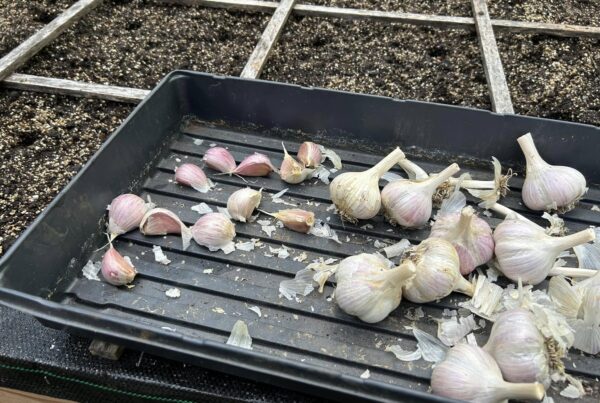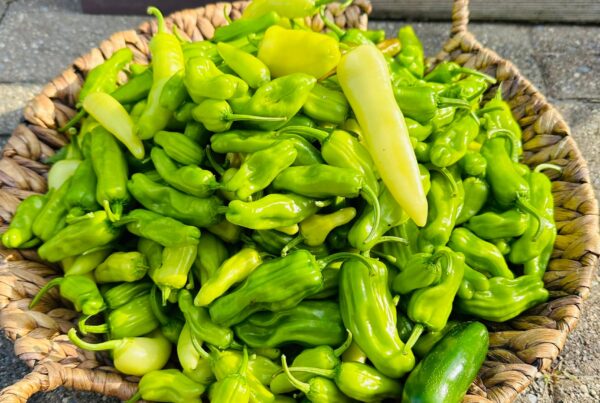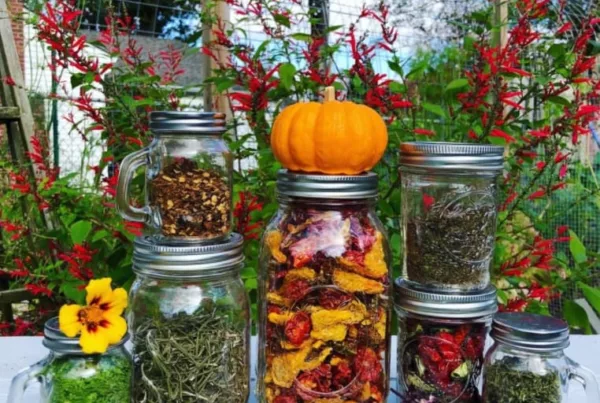Written by Kristina Hicks-Hamblin
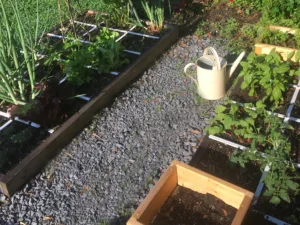 There’s no need to wait until tomato and cucumber season – early spring is the perfect time to get busy in the Square Foot Garden. An early season garden can provide you with fresh peas to nibble on, straight from your beds, and loads of lettuce for fresh homegrown salads. And the fruits of your efforts will be all the more bountiful if you do these simple tasks when you plan a spring garden:
There’s no need to wait until tomato and cucumber season – early spring is the perfect time to get busy in the Square Foot Garden. An early season garden can provide you with fresh peas to nibble on, straight from your beds, and loads of lettuce for fresh homegrown salads. And the fruits of your efforts will be all the more bountiful if you do these simple tasks when you plan a spring garden:
Plan a Spring Garden with the Right Crops
If you’re new to gardening, there was a hint in the introduction to this article – spring is not the time to plant warm season crops like tomatoes and cucumbers unless you live in a very warm climate! Unexpected cold fronts and late frosts can kill such tender annuals before they have time to get established.
Instead, turn to cool season crops which will flourish during chilly days and nights, and won’t even mind a light frost or a little snow.
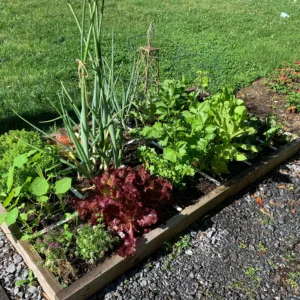
Lettuce, parsley, and onions are happy to grow in cool weather.
Here’s a selection of cool season crops to choose from, organized by family:
- Brassicas: arugula, bok choy, broccoli, cabbage, cauliflower, daikon, kale, kohlrabi, mustard greens, Napa cabbage, radishes, rutabaga, turnips
- Alliums: chives, onions, shallots
- Carrot Family: carrots, celery, cilantro, dill, fennel, parsley, parsnips
- Aster Family: lettuce
- Buckwheat Family: beets, spinach, Swiss chard
- Legumes: chick peas, fava beans, peas
Plan on Paper to Get Started
Once you’ve decided what you want to grow for spring, and have purchased your seeds, it’s time for the fun part – designing your SFG layout.
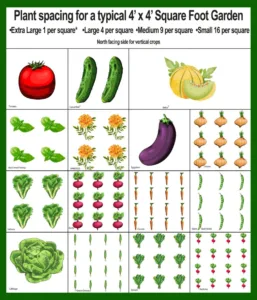 This is easy to do on grid paper.
This is easy to do on grid paper.
Or subscribe to our newsletters and get a free planting chart download.
Either way, just draw out your raised beds, making sure to include their square foot grids.
Your SFG design may be unique, depending on which crops you are growing and how many raised beds you have to work with.
However, when planning the number of seeds to sow or seedlings to transplant, be sure to follow Square Foot Gardening spacing recommendations. Keeping crops spaced at just the right distance from each other in their grids will keep your plants healthy while making efficient use of your raised beds.
And if you have already grown previous seasons’ gardens in your raised beds, think back to what you grew before and try to rotate this season’s crops.
Plan With Sun and Shadows
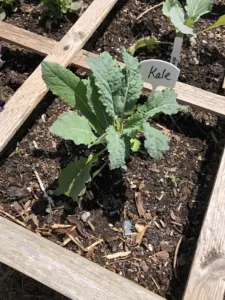
Kale is small when young, but can reach two to four feet tall at maturity.
Now that you have a paper grid to make your design, be sure to think about the height of different plants and the shadows they will cast.
Those of us in the Northern hemisphere will want to plant taller plants on the north sides of our beds to prevent plunging smaller crops into dark shade.
Low growing crops include bok choy, chives, lettuce, and radishes. Plant these to the south side of your raised beds.
Tall garden veggies that should be planted to the north include dill, fava beans, kale, mustard greens, rutabagas, and climbing peas that require a trellis.
Space out Members of the Same Family
When planning your design, don’t plant members of the same family right next to each other whenever possible.
That’s because some insects and diseases target specific families and can easily spread to neighboring crops.
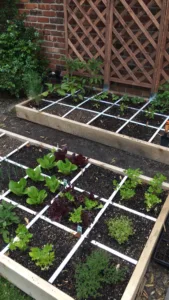
A trellis can be used to grow peas in the spring followed by squash or melons in the summer
By interplanting different families, you’ll make it harder for insects and diseases to spread, giving your crops a better chance at staying healthy.
Think Ahead to Summer
As you plan your spring garden, think ahead to your summer crops as well.
For instance, if you have a trellis on the north side of your beds for growing peas, you will be able to use that trellis for growing vining squash or melons after your last average frost.
And when seasons change from spring to summer consider replacing fast maturing and low growing crops like radishes with not-too-tall veggies such as bush beans.
That way you’re rotating families as well as preventing smaller plants from getting too much shade.
Want to keep expanding your knowledge about growing delicious homegrown food?
Learn more about the Square Foot Gardening Method by taking the introductory course.

